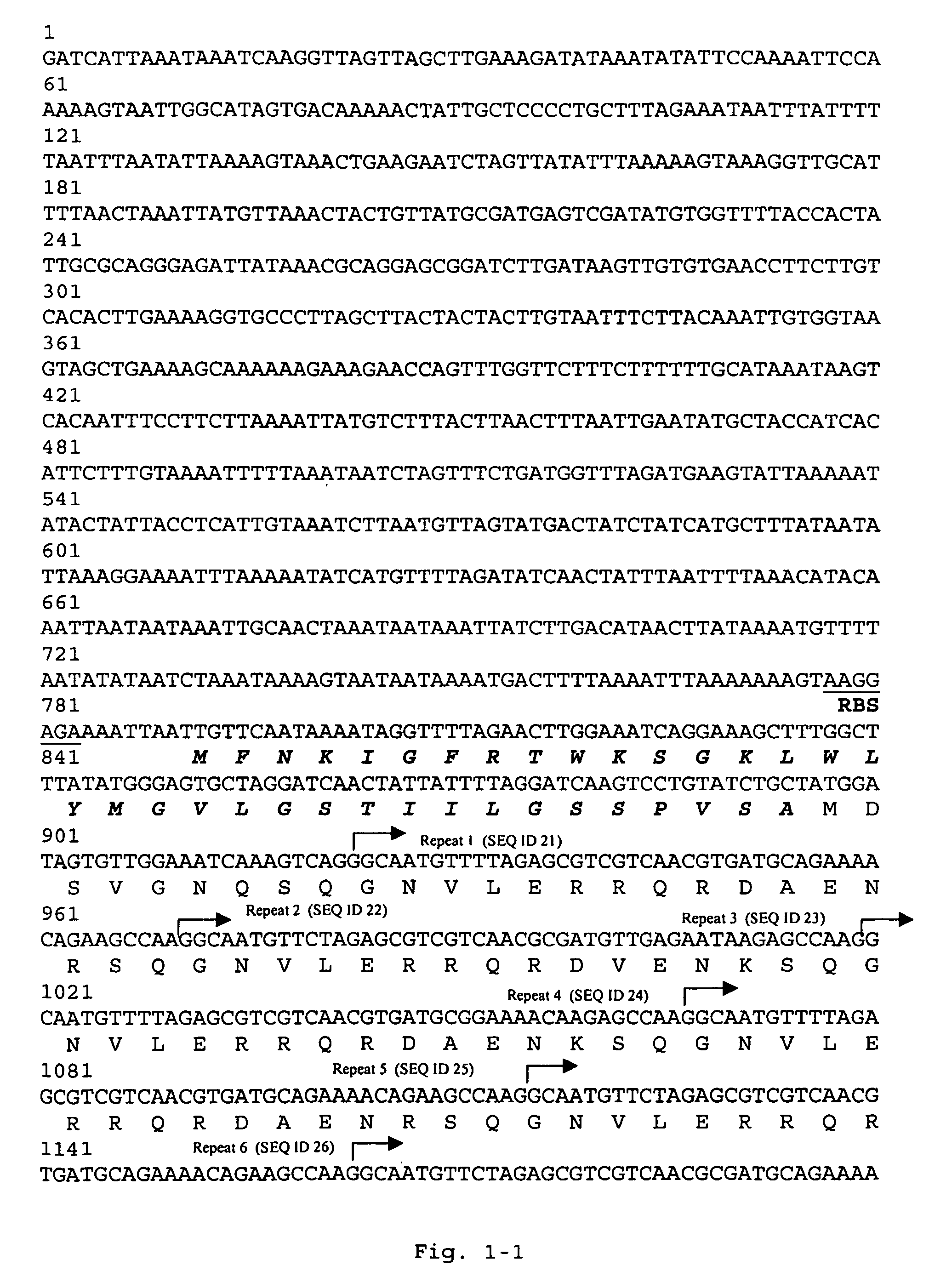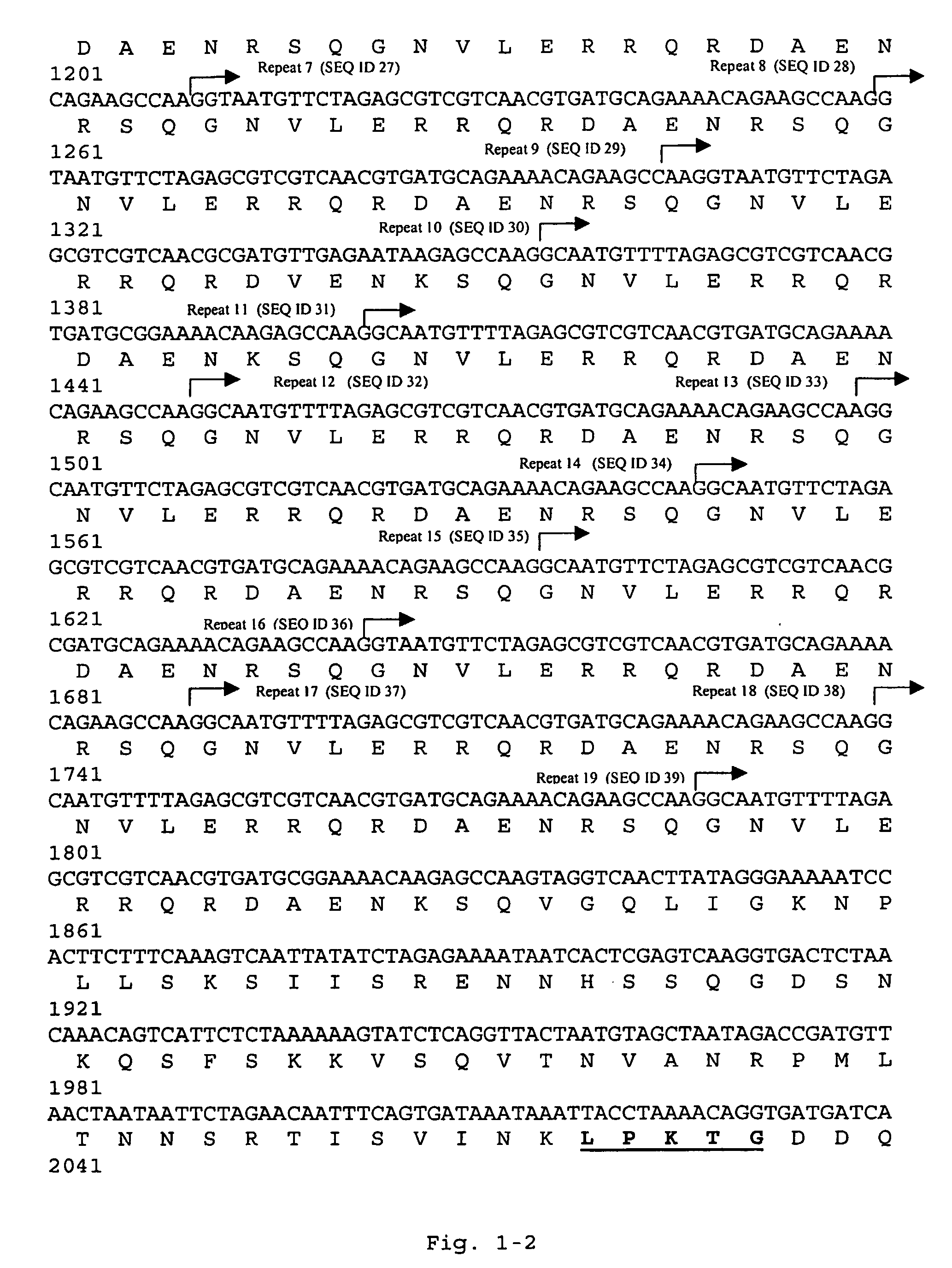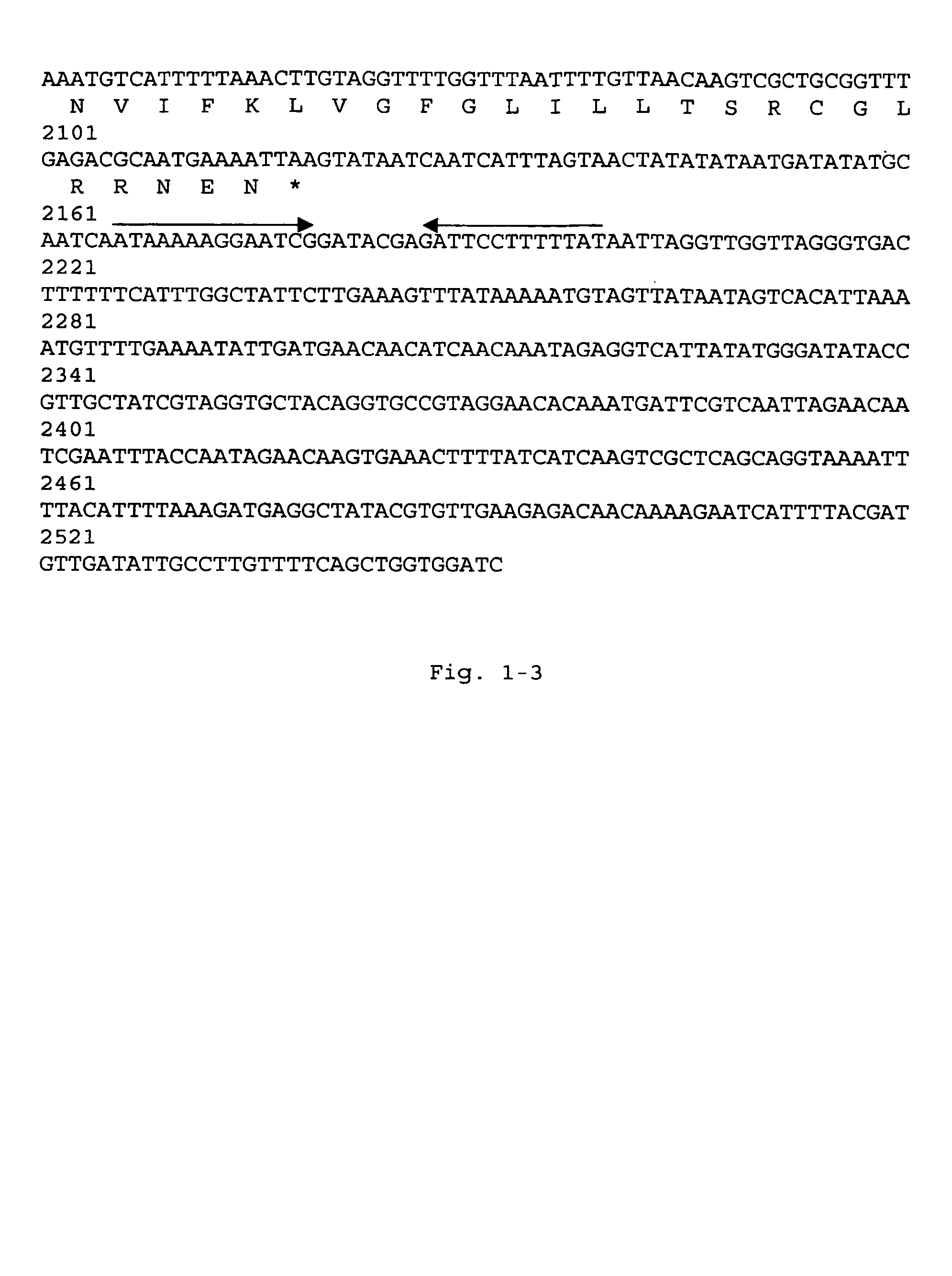Nucleic acids coding for adhesion factor of group B streptococcus, adhesion factors of group B streptococcus and further uses thereof
a technology of streptococcus and adhesion factor, which is applied in the field of nucleic acids coding for adhesion factor and group b streptococcus, and can solve the problems of significant morbidity and mortality, loss of prosthetic joints,
- Summary
- Abstract
- Description
- Claims
- Application Information
AI Technical Summary
Benefits of technology
Problems solved by technology
Method used
Image
Examples
example 1
Experimental Procedures
[0338]It is to be noted that the following materials and methods were used throughout the examples described herein if not indicated to the contrary.
Bacterial Strains and Culture Conditions
[0339]GBS strains 6313 (serotype III) and SS1169 (serotype V) represent reference strains and have been described previously (Wibawan and Lammler, 1992). GBS strains 706 S2 (serotype Ia), 33H1A (serotype Ib), and 176H4A (serotype II) were kindly provided by G. S. Chhatwal (GBF Braunschweig). GBS strain O90R (ATCC 12386) is a derivative of the serotype Ia strain O90. All GBS strains belonging to the serological groups Ia, Ib, II, III, and V, respectively, are clinical isolates and were isolated from infected neonates, while GBS strains from group IV were isolated from cows with mastitis (Chhatwal, Lammler, and Blobel, 1984a). E. coli DH5α (Hanahan, 1985) was used for cloning purposes and E. coli BL21 (Dubendorff and Studier, 1991) served as host for the production of FbsA fus...
example 2
Identification of a Novel S. Agalactiae Adhesion by a Signal Peptide Tagging Screen
Results
[0363]GBS strain 6313, belonging to serotype III, was tested in binding experiments for its interaction with radiolabelled human vitronectin, laminin, fibronectin, fibrinogen, and IgG. Strain 6313 accumulated about 50% of the total fibrinogen on its surface. Of the other proteins tested, none interacted in significant amounts (>5%) with GBS 6313. Treatment of the bacteria with either trypsin or pronase reduced the amount of bound fibrinogen to levels below 5%, indicating a proteinacious nature of the fibrinogen-binding structures of GBS 6313.
[0364]An Escherichia coli cosmid gene library of GBS 6313 was screened by colony blotting for the presence of fibrinogen-binding E. coli clones, resulting in the identification of a clone that revealed strong interaction with human fibrinogen. Partial digestion of its cosmid with Sau3A and subcloning of fragments in the range of 2-3 kb in plasmid pTEX5236 r...
example 3
FbsA is the Fibrinogen Receptor of Streptococcus Agalactiae
Results
[0366]For functional analysis of FbsA, a truncated FbsA polypeptide (FbsA-19), devoid of a signal peptide and a membrane-spanning region was synthesized as a hexa-histidyl (SEQ ID NO: 260) fusion protein in E. coli BL21 and purified by affinity chromatography. In Western blot experiments FbsA-19 revealed binding to human fibrinogen (FIG. 9), confirming FbsA as a fibrinogen receptor from GBS. To localize the fibrinogen-binding region in the FbsA protein, the N-terminal and the C-terminal regions of FbsA were synthesized as FbsA-N and FbsA-C fusion proteins and tested for fibrinogen binding. As shown in FIG. 9, fibrinogen binding was observed for FbsA-N but not for FbsA-C, indicating that the N-terminal repeats of FbsA mediates fibrinogen binding.
[0367]In competitive inhibition experiments with 125I-labelled fibrinogen, different proteins were tested for their capability to interfere with the binding of radiolabelled f...
PUM
| Property | Measurement | Unit |
|---|---|---|
| TM | aaaaa | aaaaa |
| TM | aaaaa | aaaaa |
| concentration | aaaaa | aaaaa |
Abstract
Description
Claims
Application Information
 Login to View More
Login to View More - R&D
- Intellectual Property
- Life Sciences
- Materials
- Tech Scout
- Unparalleled Data Quality
- Higher Quality Content
- 60% Fewer Hallucinations
Browse by: Latest US Patents, China's latest patents, Technical Efficacy Thesaurus, Application Domain, Technology Topic, Popular Technical Reports.
© 2025 PatSnap. All rights reserved.Legal|Privacy policy|Modern Slavery Act Transparency Statement|Sitemap|About US| Contact US: help@patsnap.com



